RQA Indicator Spotlight: Understanding Inflation Expectations
Inflation remains a pivotal factor in economic planning and forecasting, influencing everything from central bank policies to individual investment decisions. However, accurately predicting inflation is notoriously challenging due to its complex and reflexive nature. Traditional models often rely on historical data and economic indicators, but these methods can be noisy and unreliable.
The Reflexivity of Inflation
Inflation is not only an economic indicator but also a phenomenon influenced by the expectations of economic agents themselves, a concept known as reflexivity. This self-reinforcing relationship between perceptions and reality makes forecasting particularly tricky. As a result, many economists and analysts are turning to market-based methods to gauge inflation expectations more reliably.
Harnessing the Wisdom of Crowds: Market-Based Methods
Market-based inflation expectations provide a forward-looking perspective by leveraging the collective intelligence of market participants. Each of these methods typically assesses the near-term outlook of inflation, focusing on expectations over the next year. Here’s how different sources contribute to understanding these expectations:
Michigan Survey of Consumers: This survey measures consumer sentiment regarding personal finances, business conditions, and purchasing conditions over the upcoming year. While it offers direct insights from consumers, it can be swayed by recent events or media coverage.
Survey of Professional Forecasters: Conducted by the Philadelphia Federal Reserve, this survey gathers forecasts from experts on GDP growth, unemployment, and inflation. Its strength lies in the professional expertise, although it may reflect a consensus bias.
Inflation Breakeven Market: These are derived from the difference between the yields of Treasury Inflation-Protected Securities (TIPS) and standard Treasury securities, providing an insight into market expectations of inflation. They reflect real-time expectations but can be affected by liquidity issues and other market dynamics.
Source: U.S. Federal Reserve, Federal Reserve Bank of Philadelphia, Michigan University, Analysis by RQA
Examining historical trends, the three market-based inflation measures generally ebb and flow in unison, although the forecasts from professionals tend to exhibit greater variability. It is also noteworthy that general inflation expectations from consumers over the last two decades, as measured by the Michigan survey, have consistently remained at a higher level compared to the one-year breakeven forecast. This discrepancy may stem from the fact that consumers' perceptions are frequently influenced by immediate price changes in highly visible and commonly purchased goods and services, such as food and gasoline. These perceptions might not promptly align with the broader economic conditions or market expectations that guide financial indicators.
Creating a Composite Inflation Expectation Index
By integrating the outputs from the Michigan survey, the professional forecasters, and the breakeven market, analysts can develop a more comprehensive inflation expectation index. This approach can mitigate the weaknesses of individual methods and provide a more stable forecast.
Source: U.S. Federal Reserve, Federal Reserve Bank of Philadelphia, Michigan University, Analysis by RQA
The inflation expectation index generally does a good job of mirroring the current levels of actual inflation, as measured by the Consumer Price Index (CPI). While it is not a perfect predictor of what will happen over the next 1-3 years, it provides valuable insight into the present situation and the market's implied expectations for the near term.
Looking at the index today, we observe a recent spike in both the CPI and the index itself, followed by a decline in inflation expectation levels. Currently, the index stands at approximately 2.9%, which is above the long-term Federal Reserve target of 2.0% but represents a significant improvement from the recent period of higher inflation. As we navigate through what may be characterized as moderately elevated or “sticky” inflation levels, we can use the market-based forecast to gauge current sentiment regarding inflation.
Furthermore, to get insight into longer-term inflationary expectations, we can turn to the breakevens market and get inflation expectations over the next 5 and 10 years. The graphic set forth below includes the 1, 5, and 10 year U.S. inflation breakeven measures on an historical basis.
Source: Federal Reserve Bank of St. Louis
Reviewing the most recent data, the market indicates a broader range of expectations for the near term, suggesting inflation levels will remain at or slightly above the most recent CPI reports, reflecting some of the volatility observed in recent months. The 5 and 10-year breakeven measures, however, have remained steady in the 2-2.5% range, which is slightly elevated compared to historical medians and longer-term inflation expectations, but not by a large magnitude. In summary, while short-term expectations remain highly variable and somewhat elevated, medium and long-term expectations have stayed closer to the 2% long-term inflation target.
Economic Forecast Model
In April, the RQA Economic Forecast Model reached a new recent high, increasing from 0.49 to 0.51 compared to the previous month. Despite the persistence of a "higher for longer" interest rate environment, near-term economic expectations remain firmly positive.
Source: Analysis by RQA. Data from U.S. Federal Reserve; Bureau of Labor Statistics; Norgate Premium Data; Institute for Supply Management
The RQA Economic Forecast Model represents a consolidated composite of key economic leading indicators and market-based explanatory variables. The goal of this composite model is to present a holistic measure of primary U.S. economic growth drivers and their trends over time. (Additional detail on the model’s construction is provided here.)
Values above the zero-line are indicative of positive U.S. economic growth expectations in the near-term, and therefore, indicate economic strength and lesser chance of recessionary pressure. On the other hand, values below the zero-line represent the opposite - a more negative outlook and more elevated probabilities of the U.S. experiencing an economic contraction.
TAKING A CLOSER LOOK AT THE ECONOMIC DRIVERS
In the economic heatmap below, we are able to peak under the hood at a wide mix of underlying growth drivers in the U.S. economy. By reviewing this underlying data in more detail, we are better able to see how the underlying components of the U.S. economic growth picture are behaving through time. The indicators presented below have each proven to have predictive qualities in estimating the future direction of U.S. economic growth.
Source: Analysis by RQA. Data from U.S. Federal Reserve; Bureau of Labor Statistics; Norgate Premium Data; Institute for Supply Management.
The most recent insights from our leading indicator dataset depict a U.S. economy that seems to be stabilized and growing on balance.
Labor
Over the past several months, the labor market has shown signs of cooling. Employment growth has steadily declined, indicating a deceleration in job creation. Initial unemployment claims have been volatile but recently improved, suggesting some stabilization. The employment-to-population ratio has remained steady, while average weekly hours worked have seen a general decline, pointing to potential underemployment. Despite these fluctuations, the overall labor composite index has shown signs of recovery in recent months.
Commercial Output
The manufacturing sector has largely struggled, with consistent contraction over the period, though there have been recent signs of improvement. In contrast, the services sector has generally performed well, maintaining positive growth. Industrial production has remained in decline, reflecting ongoing challenges.
Income & Consumption
Personal incomes have steadily grown, indicating a robust economic backdrop for consumers. Despite this, retail sales have generally been weak, pointing to cautious consumer spending. Real personal consumption expenditures have shown consistent, yet modest growth. The overall consumer spending composite has been volatile, yet there have been periods of positive growth, particularly in early 2024.
Financials & Sentiment
The financial landscape has been marked by an inverted yield curve, suggesting potential economic downturns, though the situation has slightly eased recently. Corporate bond spreads have improved significantly, reflecting better corporate credit conditions. The monetary base has shown positive growth after previous contraction. The equity market has performed strongly, with gains in early 2024, and consumer sentiment has remained highly positive, indicating strong confidence among consumers.
Inflation & Money Supply
Inflation has been stable but elevated, with both the consumer price index and core inflation showing gradual declines. The money supply contracted significantly through much of 2023 but has stabilized and shown slight growth in early 2024. These trends suggest that while inflationary pressures are easing, the overall economic environment remains cautious.
MARKET REGIME DISCUSSION
Another month passes with the anticipated reduction in interest rates from the Federal Reserve being postponed yet again. With inflation still a major concern, a rate cut in June now appears unlikely, and the market is shifting its focus to the September meeting for a potential reduction. Although there was some discussion about the need for another hike, Fed Chair Powell quickly dismissed this possibility based on current data.
As discussed in the inflation segment, near-term expectations for inflation remain moderately elevated, while medium-term expectations suggest a more normalized range-bound level. These near-term fluctuations are causing the Fed to hesitate on initiating the first rate cut, with concerns about reflation continually emerging. This hesitation is also reflected in the interest rate market, where medium and long-term Treasury rates have shown significant fluctuations in the year-to-date time frame.
Despite some fundamental economic headwinds, the overall near-term growth profile continues to point higher, indicating that the U.S. economy is withstanding the "higher for longer" environment. As higher rates continue to impact the economy, it will be important to monitor adverse effects across sectors if rates remain at their current levels into the back half of the year. Given the current growth profile and elevated inflation levels, the U.S. remains in the inflation boom quadrant for the foreseeable future.
Source: RQA.







